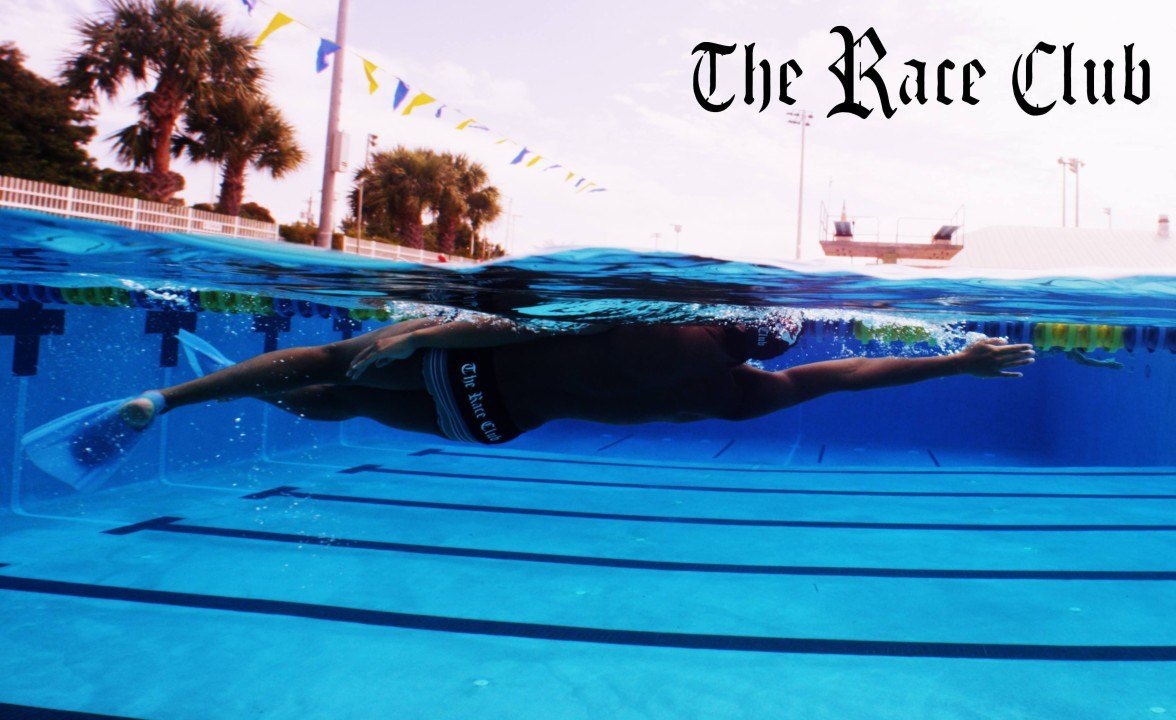Courtesy of Gary Hall Sr., 10-time World Record Holder, 3-time Olympian, 1976 Olympic Games US Flagbearer and The Race Club co-founder.
The fundamentals of backstroke are the same as for freestyle. Although the biomechanics change some when one rotates from the freestyle to the backstroke position, all of the basic laws and forces governing technique remain the same. In other words, we want to reduce frontal drag as much as possible, increase propulsive power as much as possible and try to comply with the law of inertia.
COMMON MISTAKES
When it comes to reducing frontal drag, one of the most common mistakes made is elevating the head too much. As in freestyle, the elevation of the head creates two problems. It causes the hips and legs to drop down resulting in a bad body position for drag and it increases surface or wave drag by not allowing the bow wave to go over the face.
HEAD POSITION
Head position in backstroke is an example of the conflict between the positions of propulsive power and reduced frontal drag that occur in swimming. For maximum biomechanical propulsive power in backstroke, the head needs to be elevated and the back straightened, while the body rotates from side to side. To reduce frontal drag, the head needs to be laid back with extension of the lumbar spine just enough to allow a small trickle of water to go over the goggles. Fortunately, because the times at which maximum propulsion from the pull and maximum body speed during the stroke cycle occur are different, with respect to both frontal drag and power, one can have his cake and eat it, too.
A SMALL STREAM OF WATER OVER THE FACE
Frontal drag is exponentially related to the object’s speed, so it is important that the position of lowest drag occurs precisely when the speed is highest and that is when the hand enters the water. At that point, or slightly before, one should be able to see a small stream of water pass over the face. To the backstroker, as opposed to the freestyler, where one cannot tell if the water is going over the back of the head or not, the end point is easily discernible by seeing a small amount of water stream over the goggles.
ACHIEVING MAX POWER
To achieve maximum propulsive power from the arm pull, the backstroker needs to be on his side with the back flexed slightly and the head elevated some. This position of power should occur just a few tenths of a second after the hand enters the water, during what is called the catch phase of the pull.
THE MINI-CRUNCH
The different times in the stroke cycle that these two important facts occur enable the swimmer to move from one position to the other with each stroke taken, taking advantage of the different forces that occur at each position. This slight change from extension to flexion of the lumbar spine essentially requires the same motion as doing a mini-crunch in the water, over and over again. This motion, along with body rotation, requires tremendous core strength to do well and often.
TWO DRILLS FOR HEAD POSITION
Two of our favorite drills to help establish good head position for backstroke are kicking in a streamline on the back, allowing the face to go slightly underwater after each breath, followed by swimming backstroke using a similar head motion. The second drill is sculling on the back with arms extended over head, allowing the face to drop beneath the water after each breath, followed by a swim in a similar head position.
You can learn more about head position in backstroke by watching our recently released Race Club swimisode featuring World Champion backstroker, Junya Koga.
http://www.theraceclub.com/videos/swimisodes-backstroke-junya-koga-head-position/
Work on your technique with us. March 12-15th camp in Pacific Palisades, CA. April 3rd -10th camp in Islamorada, FL. http://www.theraceclub.com/swim-camps/

Gary Hall, Sr., Technical Director and Head Coach of The Race Club (courtesy of TRC)
Yours in swimming,
Gary Sr.
Like The Race Club on Facebook
Follow The Race Club on Instagram
Follow The Race Club on Twitter
Connect to The Race Club / Gary Hall Sr. on Linkedin
THE RACE CLUB
 Because Life is Worth Swimming, our mission is to promote swimming through sport, lifelong enjoyment, and good health benefits. Our objective is for each member of and each participant in The Race Club to improve his or her swimming performances, health, and self-esteem through our educational programs, services and creativity. We strive to help each member of The Race Club overcome challenges and reach his or her individual life goals.
Because Life is Worth Swimming, our mission is to promote swimming through sport, lifelong enjoyment, and good health benefits. Our objective is for each member of and each participant in The Race Club to improve his or her swimming performances, health, and self-esteem through our educational programs, services and creativity. We strive to help each member of The Race Club overcome challenges and reach his or her individual life goals.
The Race Club provides facilities, coaching, training, technical instruction, video, fitness and health programs for swimmers of all ages and abilities. Race Club swim camps are designed and tailored to satisfy each swimmer’s needs, whether one is trying to reach the Olympic Games or simply improve one’s fitness. Our programs are suitable for beginner swimmers, pleasure swimmers, fitness swimmers, USA swimming or YMCA swimmers, or triathletes; anyone who wants to improve swimming skills. All of our Race Club members share an enjoyment of being in the water and use swimming to stimulate a more active mind and body.
